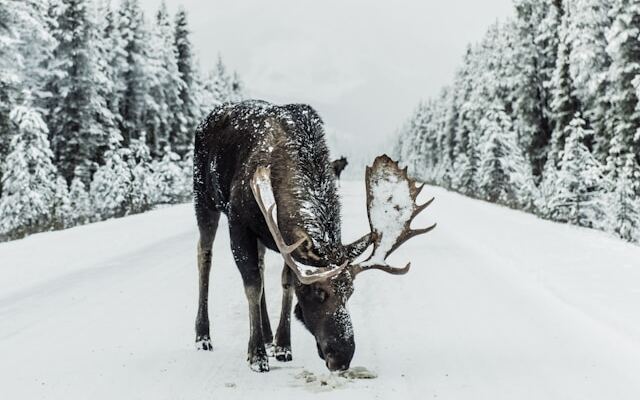
As many newcomers to Canada originate from countries with warmer climates than Canada, this article aims to equip newcomers with five essential tips and tricks to stay safe during the cold winter months.
Canada’s winters offer unique experiences for many newcomers, providing opportunities to engage in activities they may not have experienced in their home countries. From sledding to building snowmen, there are numerous enjoyable activities to partake in during Canada’s winter months.
Conversely, winters in this country are renowned for their cold and dry weather patterns, necessitating Canadians to exercise caution in various aspects, from timing their outdoor activities to selecting appropriate attire for the season. This emphasis on safety is essential for preventing illnesses and maximizing enjoyment during the holiday season.
Continue reading for five essential winter safety tips to ensure the safety of you and your family.
1. Check the forecast for your community
Whether for work, school, or any other reason necessitating leaving the house during winter, preparation is paramount.
A crucial aspect of this winter preparedness involves checking the daily forecast for your community or the area where you’ll be spending your time that day. For instance, if you’re headed to work or dropping your child off at school, reviewing the local forecast enables you to prepare for the weather conditions you’ll encounter in your vicinity. Similarly, if traveling for work, checking the forecast in that region offers the same advantages.
*In addition to monitoring the temperature, it’s essential to heed wind chill warnings, as they can signal colder-than-expected weather conditions.
Canadians have various methods for checking the forecast, including local news broadcasts, weather apps on their cellphones, and websites such as the Environment Canada website.
2. Dress warm
In the frigid winter months of Canada, prioritizing warmth in your attire is crucial. Dressing appropriately for Canadian weather can safeguard against serious illnesses and conditions like hypothermia or frostbite.
Above all, dressing warmly for the Canadian winter entails layering, which involves wearing two or more articles of clothing simultaneously. This approach helps to keep you dry, warm, and comfortable throughout Canada’s winter season.
3. Stay dry
Keeping dry is essential in Canadian winters as wet clothing can lead to rapid heat loss. To ensure dryness, it’s advisable to carry spare clothing in case of rain or snow.
Furthermore, if you begin to perspire, it’s beneficial to remove outer layers or unzip your coat to regulate body temperature and prevent overheating.
4. Keep active
An effective method to prevent excessive cold is by staying active. Engaging in low-intensity exercise can be invaluable for winter safety in Canada.
Physical activity aids in maintaining body warmth by generating heat. Examples of exercises conducive to generating body heat during the Canadian winter include running or walking, skating, tobogganing, or cross-country skiing.
5. Seek shelter and limit time outside
Whenever feasible, it’s advisable for Canadians to seek shelter from the cold during winter months and minimize outdoor exposure, especially during periods of high wind chill.
While there may be unavoidable circumstances requiring outdoor activity, prioritizing indoor stays, when possible, is crucial for winter safety in Canada. Given the unpredictable nature of Canadian weather, particularly during severe cold spells, it’s prudent to limit outdoor ventures during such conditions.
Winter in Canada
While it’s vital to keep in mind the safety tips outlined above, it’s equally important to recognize that winter is one of Canada’s most distinctive and enjoyable seasons, particularly for newcomers.
Winter offers numerous quintessentially Canadian experiences, such as witnessing the Northern Lights. Additionally, there are abundant outdoor activities to enjoy during winter, ranging from skiing and snowshoeing to ice fishing and skating.




